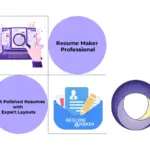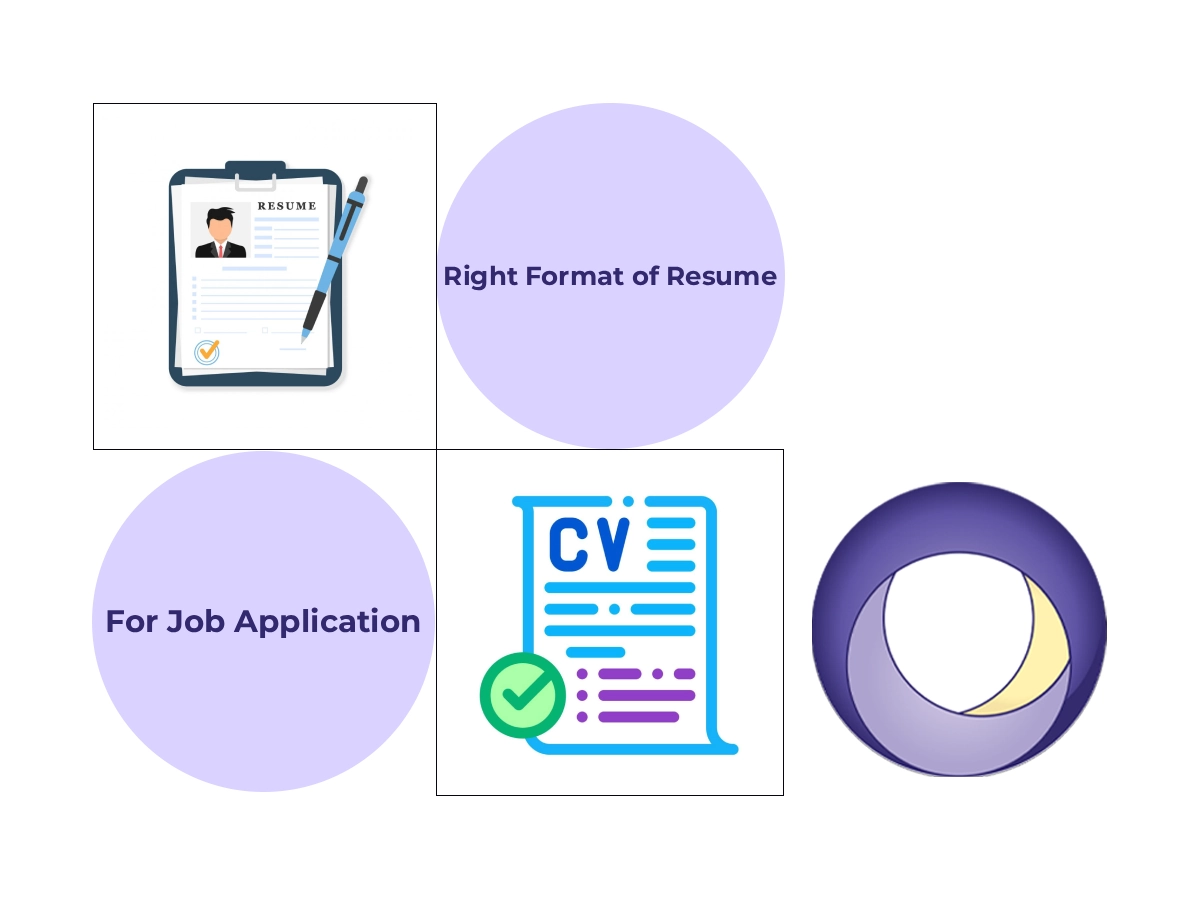
How to Choose the Right Format of Resume for Job Application
Crafting a resume feels deceptively simple until you sit down to do it. That blank page quickly becomes overwhelming. Do you emphasise work history? Skills? Or a little bit of both? The truth is, the format of resume for job applications matters as much as the content. It shapes how employers perceive your story at first glance.
Table Of Content
- Why the Format of Resume for Job Matters More Than You Think
- The Three Core Resume Formats You Need to Know
- 1. Chronological Resume Format
- Niche Resume Formats
- 1. Students and Fresh Graduates
- 2. Early Career Professionals (1–4 Years)
- 3. Mid-Career Professionals (5–12 Years)
- 4. Senior Professionals and Executives (12+ Years)
- 5. Career Changers
- Real Employer Insight: What They Look For First?
- Making Your Resume ATS-Friendly
- Formatting Mistakes That Cost Interviews
- Industry-Specific Preferences in Resume Formats
- Tech & IT
- Finance & Accounting
- Healthcare
- Creative Industries (Design, Media, Marketing)
- Education & Training
- Quick Recap
- Best Format of Resume for Job in the UAE & MENA Job Market
- 1. The UAE: International Standards, Local Nuances
- 2. Saudi Arabia: Stability and Commitment
- 3. Egypt: Adaptability and Breadth
- 4. GulfTalent & Bayt vs. Global Platforms
- Lived Example about two Job Seekers in Dubai
- Key Takeaway for MENA Job Seekers
- Step-by-Step Guide: How to Choose the Right Resume Format
- Step 1: Ask Yourself, What’s My Career Story?
- Step 2: Consider the Employer’s Priorities
- Step 3: Factor in the Region
- Step 4: Align With ATS
- Step 5: Test Your Resume
- A Quick “Resume Format Choice” Framework
- Advanced Tips for Resume Formatting
- Keep Section Order Logical
- Font and Layout Choices
- Write for Each Role
- Mini Outlines of the Three Main Formats
- Chronological Format (best for steady growth)
- Functional Format (best for career changers or grads)
- Combination/Hybrid Format (best for mid-career & professionals with diverse skills)
- Advanced Tips for Online Applications
- A Small Detail That Makes a Big Difference
- The Final Step: Proofread Like Your Career Depends On It
- Final Checklist: Choosing the Right Format of Resume for Job
- FAQs on the Best Format of Resume for Job
- Should my resume be one page or two?
- Do I need a photo of my resume from the UAE?
- Which format of resume for job works best for fresh graduates?
- What’s the best format of resume for job interview readiness?
- Can I use the same resume format for every job?
- Are infographics or highly designed resumes compelling?
- Conclusion: Your Resume Format Is Your First Impression
Over the past decade, I’ve interviewed hundreds of job seekers and spoken with dozens of hiring managers in tech and healthcare. One pattern is clear: resumes that follow the correct format get noticed faster. Resumes that don’t, no matter how impressive the candidate, often sink in the pile.
In this guide, we’ll explain the format of resume for job and when to use each, providing practical insights on personalising them to your career stage. Whether a recent graduate, mid-career professional, or changing industries, you’ll find a path forward.
Why the Format of Resume for Job Matters More Than You Think
Most applicants assume employers pore over every line of a resume. The reality? Studies suggest the average employer spends 6–8 seconds on an initial scan. In that tiny window, the structure of your resume guides the eye, or loses it.
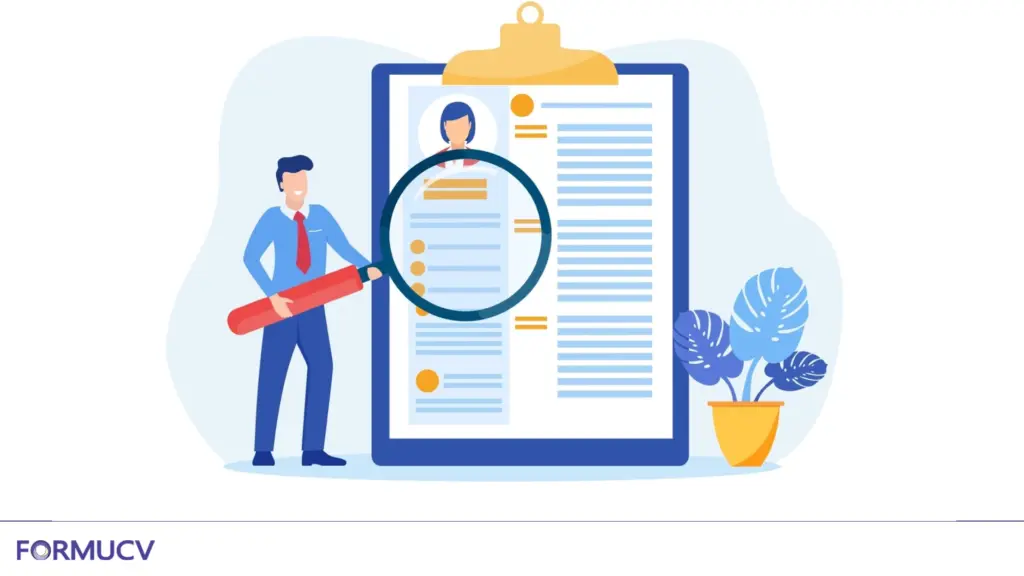
Consider two candidates with the same experience:
- Candidate A uses a clean chronological format, clearly showing five years of progressive growth in software development.
- Candidate B buries that same experience in a poorly organised hybrid template.
Guess who gets called first?
The resume format for job interview success isn’t about fancy design. It’s about clarity, relevance, and how well the layout matches your career story. ATS (Applicant Tracking Systems) add another layer; if your format confuses the system, your resume may never even reach human eyes.
That’s why choosing the proper structure is less about personal taste and more about strategy.
The Three Core Resume Formats You Need to Know
While resume templates come in endless variations, most fall under three main categories. Each has its strengths, weaknesses, and ideal use cases. Let’s break them down.
1. Chronological Resume Format
The chronological format is the classic and still the most widely used. It lists work experience in reverse order, starting with the most recent.
Best for:
- Professionals with a steady career path.
- Job seekers apply to traditional industries (finance, law, education).
- Candidates who want to highlight career progression.
Strengths:
- Employers love it for its simplicity.
- Works well with ATS.
- Shows growth and stability over time.
If you have career gaps or frequent job changes, this format of resume for job may highlight them too much.
Example scenario:
This structure will make a project manager in Dubai with eight years of progressive roles across two companies shine. Each role builds on the last, making the career story easy to follow.
2. Functional Resume Format
The functional (or skills-based) format flips the traditional order. Instead of leading with work history, it highlights skills and achievements first. Work experience comes later, often condensed into a brief list.
Best for:
- Career changers who need to spotlight transferable skills.
- Fresh graduates with limited work history.
- Professionals re-entering the workforce after a long gap.
Strengths:
- Let’s you emphasise capabilities over timelines.
- Useful when past job titles don’t reflect your actual expertise.
- Keeps employers focused on what you can do, not where you’ve been.
Some employers are suspicious of this format, seeing it as a way to “hide” career gaps. If not formatted carefully, ATS systems may misread skill sections.
Example scenario:
A graphic designer moving into UX/UI design may not have direct titles to match. A functional format of resume for job allows them to group skills like “User Research,” “Wireframing,” and “Prototyping” at the top, showing competence before titles.
3. Combination (Hybrid) Format of Resume for Job
As the name suggests, the combination format blends elements of both chronological and functional structures. It highlights skills and achievements at the top while providing a detailed work experience timeline.
Best for:
- Mid-career professionals with both skills and solid work history.
- Candidates applying for senior or specialised roles.
- People who want to balance transferable skills with career progression.
Strengths:
- Provides the best of both worlds.
- Flexible, can be customised depending on the job.
- Helps candidates transitioning between roles but still wanting to show steady growth.
It can become cluttered if not carefully designed, and slightly harder to scan than pure chronological order.
Example scenario:
An IT professional in Abu Dhabi with 10 years in network engineering, pivoting toward cybersecurity. A combination format of resume for job lets them showcase cybersecurity certifications and projects at the top while listing technical roles in order.
Side-by-Side Comparison of Resume Formats
| Format of Resume for Job Feature | Chronological | Functional | Combination (Hybrid) |
| Focus | Career progression | Skills and achievements | Both skills + timeline |
| Best for | Steady work history | Career changers/grads | Experienced professionals |
| employer Familiarity | Very high | Moderate (mixed views) | High |
| ATS Compatibility | Excellent | Risky if poorly structured | Good (if balanced well) |
| Weak Point | Exposes career gaps | It can look like hiding info | Risk of clutter |
Employers often tell me they prefer chronological because it’s the easiest to digest. However, I’ve also seen functional and hybrid formats win interviews when used with purpose.
Think of formats as tools, not rules. Given your career stage, the best resume format for job success is one that tells your story clearly and persuasively.
Niche Resume Formats
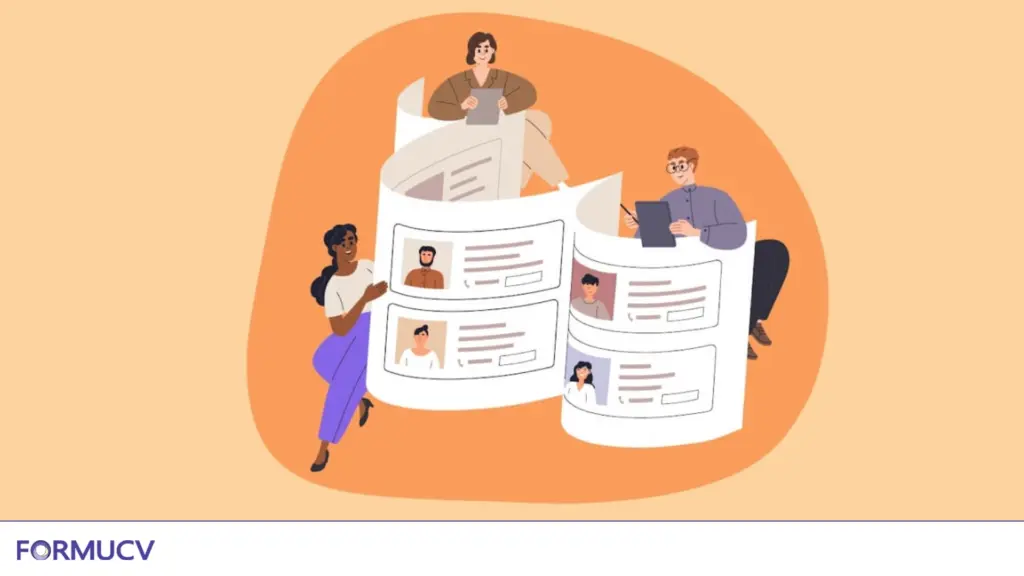
While the three main formats cover 90% of use cases, there are a few specialised formats worth mentioning:
- Targeted Resume: Fully customised for one role, emphasising only the most relevant skills and experience. Time-consuming, but powerful.
- Mini Resume: A condensed, one-page version often used for networking events or conferences.
- Portfolio-Integrated Resume: Common in creative fields, links to work samples are central.
These aren’t everyday formats but can give you an edge in specific contexts, especially when writing your resume for high-competition roles in places like Dubai, Riyadh, or Cairo.
Choosing the Right Format of Resume for Job by Career Stage
Not every job seeker fits into the same mould. A graduate leaving university shouldn’t use the same structure as a seasoned executive. Let’s break down the best approaches for each stage.
1. Students and Fresh Graduates
Main challenge: Little to no work history.
For this group, the functional resume format often works best. Instead of trying to stretch out part-time jobs or unrelated internships, the format highlights skills, coursework, and relevant projects.
Example:
A computer science graduate in Sharjah applying for a junior developer role may not have professional experience. However, the resume shows value by leading with “Skills: Python, Java, Database Management” and listing a capstone project.
If you’ve done volunteer work or student leadership roles, treat them as experience. Employers care about initiative, not just job titles.
2. Early Career Professionals (1–4 Years)
Main challenge: Limited but growing work history.
The chronological format of resume for job usually shines here. Employers want to see progression, even if it’s just moving from intern to junior associate.
Example:
A marketing assistant in Cairo with three years of experience can use a clean chronological format. Even small promotions, like “Marketing Intern → Marketing Associate”, tell a compelling growth story.
Use bullet points that emphasise achievements, not just duties. Instead of “Managed social media accounts,” write “Increased Instagram engagement by 42% in six months.”
3. Mid-Career Professionals (5–12 Years)
Main challenge: Balancing experience with evolving skills.
At this stage, a combination format works well. It highlights both career history and key competencies.
Example:
An accountant in Dubai who’s been promoted across roles but is now pursuing managerial positions could benefit from showcasing leadership skills up front, followed by a timeline of roles.
Keep the work history relevant. Jobs from over 10 years ago can be summarised or omitted if they don’t support your current goals.
4. Senior Professionals and Executives (12+ Years)
Main challenge: Avoiding clutter while emphasising leadership.
A chronological format with an executive summary works best here. Employers and boards expect a clear career trajectory. Skills matter, but leadership impact matters more.
Example:
A regional sales director in Riyadh should focus on high-level results: “Grew regional revenue by 120% over five years,” not on every detail of daily tasks.
If needed, use a two-page resume. Depth is expected for senior roles, but keep it sharp and achievement-focused.
5. Career Changers
Main challenge: Convincing employers you’re qualified without direct titles.
The functional or combination format helps here. You bridge the gap between old and new industries by spotlighting transferable skills.
Example:
A teacher moving into corporate training in Abu Dhabi might highlight skills like “Curriculum Design,” “Public Speaking,” and “Stakeholder Communication” at the top, with teaching jobs listed below in shorter form.
Use the job description as a map. Mirror the keywords the employer uses, so your resume speaks their language.
Real Employer Insight: What They Look For First?
During a panel discussion in Dubai with three HR managers, I asked them what they scan first on a resume. Their answers were surprisingly consistent:
- Job titles and companies. They want to know where you worked and at what level.
- Skills section. A quick check for keywords that match the job posting.
- Overall structure. If it looks messy or inconsistent, they move on.
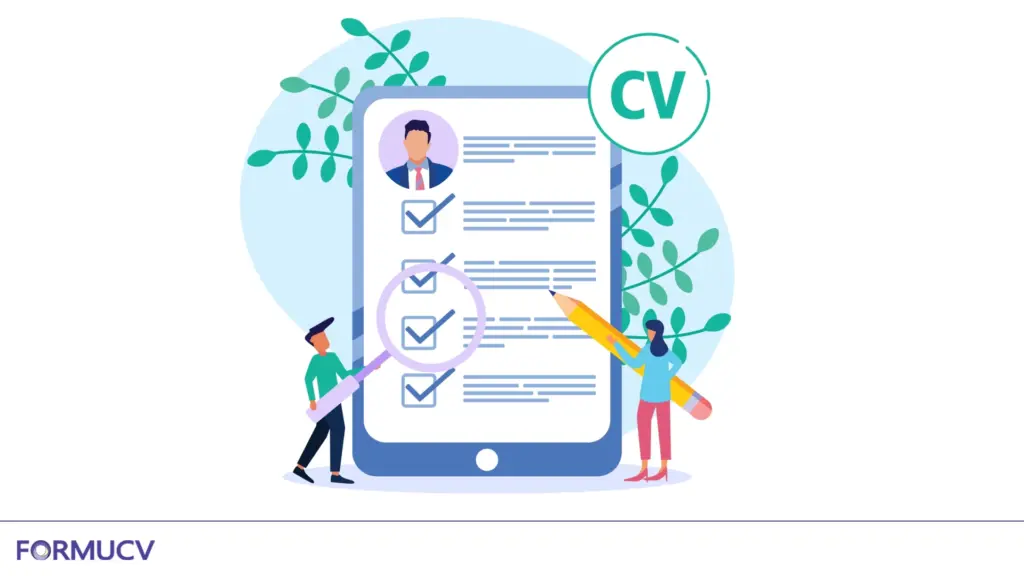
That’s why the resume format for job applications isn’t a side decision; it directly shapes these first impressions.
Making Your Resume ATS-Friendly
An Applicant Tracking System (ATS) is software that screens resumes before an employer even sees them. Platforms like Bayt, GulfTalent, and Naukrigulf rely on ATS in the UAE and broader MENA job market. Your resume format could be filtered out automatically if it doesn’t play nicely with these systems.
How to optimise ormat of resume for job for ATS:
- Stick to standard headings. Use “Work Experience,” “Education,” “Skills.” Avoid creative labels like “My Journey” or “Academic Story.”
- Avoid text boxes and graphics. ATS often struggles to read them. Please keep it simple.
- Use Word or PDF. But make sure the PDF is text-based, not image-based.
- Mirror the job description. If the posting says “Project Management,” don’t just write “Handled projects.” Use their wording.
Quick case: A finance professional in Dubai once told me he applied for over 40 roles without hearing back. After running his resume through an ATS checker, we discovered the system couldn’t parse half his “graphical” CV. A simple chronological format fixed the issue, and he landed three interviews within a month.
Formatting Mistakes That Cost Interviews
Even the correct resume format can backfire if executed poorly. Here are common pitfalls I see:
- Overloading with buzzwords. Employers want evidence, not jargon. “Strategic thinker” means little without results.
- Tiny fonts or cramped spacing. If your resume isn’t easy on the eyes, it won’t be read.
- Excessive length. For most professionals, one page is ideal. Two pages if you’re senior. More than that, and you risk losing attention.
- Irrelevant details. Listing high school grades or hobbies like “watching Netflix” wastes space.
- Poor consistency. Mixing fonts, bullet styles, or date formats makes you look sloppy.
*Clarity beats creativity regarding the resume format for job interview readiness.
Industry-Specific Preferences in Resume Formats
Different industries lean toward different resume structures. Understanding this can give you an edge.
Tech & IT
- Preferred format: Combination or chronological.
- Reason: employers want to see skills (programming languages, frameworks) and experience in specific roles.
- Tip: If relevant, add a “Projects” section, especially for developers, data scientists, or UX designers.
Finance & Accounting
- Preferred format: Chronological.
- Reason: Stability, reliability, and career progression are highly valued.
- Tip: Emphasise certifications (CPA, CFA, ACCA) prominently.
Healthcare
- Preferred format: Chronological.
- Reason: Employers must verify continuous practice and experience across hospitals/clinics.
- Tip: Highlight licenses and ongoing training near the top.
Creative Industries (Design, Media, Marketing)
- Preferred format: Combination or portfolio-integrated.
- Reason: Skills and originality matter, but they still want a timeline of experience.
- Tip: Link to an online portfolio instead of embedding graphics in the CV.
Education & Training
- Preferred format: Combination.
- Reason: Teaching experience is critical, but skills in curriculum design, public speaking, or technology integration need equal weight.
Quick Recap
- ATS systems favour simple, structured resumes.
- Employers scan for clarity first, creativity second.
- Different industries have distinct preferences.
Choosing the resume format for job success is not just about personal style; it’s about aligning with employer expectations and system requirements.
Best Format of Resume for Job in the UAE & MENA Job Market
Job hunting in the MENA region has its own nuances. While resume principles are global, employers in Dubai, Riyadh, and Cairo often look for slightly different signals than U.S. or European companies. That’s why considering the format of a resume for job applications in this region can make a huge difference.
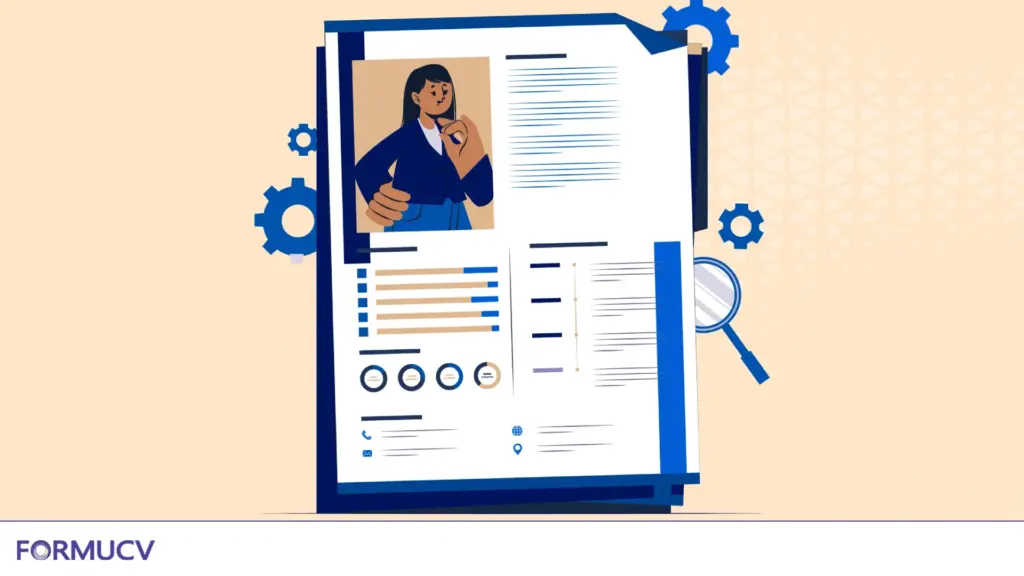
1. The UAE: International Standards, Local Nuances
Dubai and Abu Dhabi attract global talent, which means HR teams expect resumes that meet international standards: clean, ATS-friendly, and achievement-focused. At the same time, local employers value bilingualism and stability.
- Best format: Chronological or combination.
- Reason: Employers want to see a steady career path, but highlighting technical or language skills up front helps.
- Tip: If you’re applying to a multinational, keep it strictly professional, avoid adding personal details like age or marital status unless requested. For smaller local firms, such details are still sometimes expected.
Example: A software engineer applying in Dubai should use a hybrid resume, with skills like “Cloud Infrastructure” and “Cybersecurity” at the top and a clear reverse-chronological history beneath.
2. Saudi Arabia: Stability and Commitment
Saudi employers tend to examine career length with past employers. Long stints with a company reflect loyalty, which is highly valued.
- Best format: Chronological.
- Reason: It demonstrates steady growth and long-term value.
- Tip: If you’ve changed jobs frequently, downplay it by highlighting long-term projects or continuous consulting work.
Example: A project manager in Riyadh who’s worked with three companies in ten years should present achievements chronologically, reinforcing leadership and commitment.
3. Egypt: Adaptability and Breadth
In Egypt, companies often want candidates who can juggle multiple roles or wear different hats, especially in startups or SMEs.
- Best format: Combination.
- Reason: This allows you to showcase a broad skill set while still proving career experience.
- Tip: Add sections like “Projects” or “Key Achievements” if you’ve worked across diverse fields.
Example: A digital marketer in Cairo could lead with skills in SEO, PPC, and social media management, while also listing previous roles in advertising and e-commerce.
4. GulfTalent & Bayt vs. Global Platforms
Most job seekers in the region use platforms like Bayt, GulfTalent, and Naukrigulf, all of which use ATS filters. A simple chronological or combination resume passes more smoothly. Creative, design-heavy resumes may look attractive to humans, but often fail ATS screening.
That’s where tools like FormuCV give applicants an advantage. Our templates are built with employer input, ensuring they remain ATS-safe while still looking modern. Features like AI-driven keyword suggestions and job match scoring mean your resume is tuned for both the system and the human eye.
Lived Example about two Job Seekers in Dubai
Case 1: Ahmed, a civil engineer with 12 years of experience, used a functional resume to “hide” a career gap. Unfortunately, employers skipped it because they couldn’t track his timeline. Switching to a chronological format of resume for job with a short note explaining his gap (“career break for family relocation”) got him three interviews within weeks.
Case 2: Sara, a marketing professional moving from Cairo to Dubai, needed to highlight transferable skills. A hybrid format allowed her to showcase branding and campaign management expertise while showing her three previous roles. She landed an offer within two months.
The difference wasn’t luck; it was format.
Key Takeaway for MENA Job Seekers
The resume format for job interview readiness in MENA markets is about balance:
- Show stability where it’s valued (Saudi Arabia).
- Highlight adaptability in dynamic economies (Egypt).
- Blend international polish with local expectations (UAE).

And always, always keep it ATS-friendly. (Of course, an ATS friendly resume Builder can help you)
Step-by-Step Guide: How to Choose the Right Resume Format
Picking the proper format of resume for job doesn’t have to be guesswork. Think of it as answering questions that guide you toward the right choice.
Step 1: Ask Yourself, What’s My Career Story?
- Stable growth with few gaps? Go chronological.
- Switching industries or highlighting transferable skills? Go functional or hybrid.
- A mix of strong experience and standout skills? Go hybrid.
Example: If you’ve been in IT support for 8 years but want to move into cybersecurity, a combination format lets you highlight certifications and relevant projects before detailing your past roles.
Step 2: Consider the Employer’s Priorities
- Traditional industries (finance, healthcare, education): Chronological.
- Fast-moving industries (tech, marketing, startups): Hybrid or functional.
- Creative industries (design, media, content): Hybrid, with portfolio links.
Quick check: If the job ad emphasises “years of experience,” lean chronological. If it stresses “skills” or “proficiency,” lean functional/hybrid.
Step 3: Factor in the Region
- UAE: International polish, bilingual advantage, ATS-safe.
- Saudi Arabia: Emphasise stability and loyalty → chronological.
- Egypt: Flexibility and skills breadth → hybrid.
Step 4: Align With ATS
- Stick to standard section headings.
- Use bullet points, not paragraphs.
- Avoid images, icons, and complex tables.
- Include keywords from the job posting naturally.
Step 5: Test Your Resume
Before sending, run your resume through an ATS checker or a job match tool (like FormuCV’s AI-powered job scoring). This ensures the format you chose is not only employer-friendly but also system-friendly.
A Quick “Resume Format Choice” Framework
- Do you have a steady work history without significant gaps? Use chronological.
- Are you changing careers or a fresh graduate? Use functional.
- Do you have both experience and transferable skills? Use a combination.
- Are you in a creative field where a portfolio matters? Use a combination with the portfolio link.
- Are you applying in a market like Saudi Arabia, where loyalty is prized? Stick to chronological.
Imagine Leila, a mid-career HR professional in Dubai, aiming for a managerial role.
- She has 9 years of experience across three companies.
- She’s completed a CIPD certification and led multiple projects.
- The job ad highlights “leadership experience” and “employee engagement skills.”
Which format works best? A combination resume format:
- Top section: “Leadership Skills” + “Employee Engagement Strategies.”
- Middle: Chronological work history.
- Bottom: Certifications.
This structure allows her to spotlight both the competencies the employer cares about and her steady career growth.
Without a framework, many job seekers pick a format of resume for job based on looks or what a friend used. That’s risky. By following these steps, you make a deliberate choice that aligns with your career story, employer expectations, and regional norms.
Advanced Tips for Resume Formatting
Once you’ve chosen your format, the small details distinguish between “good” and “outstanding.” Employers notice polish. Here’s how to refine your layout for maximum impact.
Keep Section Order Logical
Employers expect a flow. If they have to hunt for key info, you’ve lost them. Standard order looks like this:
- Contact Information
- Professional Summary
- Skills Section (if hybrid/functional)
- Work Experience
- Education
- Certifications & Additional Info
If you’re a student or a fresh graduate, swap #4 and #5 (education before experience).
Font and Layout Choices
- Fonts: Stick to professional ones like Arial, Calibri, or Helvetica.
Size: 10–12 pt for text, 14–16 pt for headings. - Margins: 0.5–1 inch for balance.
- White space: Don’t cram. Space makes your resume easier to scan.
Remember: simplicity signals professionalism.
Write for Each Role
A common mistake is sending the same resume to every employer. Instead, tweak your skills, summary, and section order based on the job description. This isn’t reinventing the wheel; slight adjustments massively boost relevance.
Mini Outlines of the Three Main Formats
Best three format of resume for job mini outlines:
Chronological Format (best for steady growth)
- Contact Info
- Professional Summary
- Work Experience (reverse order, detailed)
- Skills (optional)
- Education
- Certifications
Functional Format (best for career changers or grads)
- Contact Info
- Professional Summary
- Key Skills & Competencies (grouped, detailed)
- Projects or Achievements
- Work Experience (shortened, less detail)
- Education
Combination/Hybrid Format (best for mid-career & professionals with diverse skills)
- Contact Info
- Professional Summary
- Skills & Core Competencies
- Key Achievements (optional)
- Work Experience (reverse order)
- Education
- Certifications & Extras
Having these structures at your fingertips makes it much easier to start. Instead of staring at a blank page, you fill in a proven outline.
Advanced Tips for Online Applications
- Save multiple versions. Create one “master resume” and make copies for specific jobs. Tools like FormuCV (a free AI resume builder) let you store different versions securely in your dashboard.
- Use keywords naturally. Don’t keyword-stuff. Employers can spot it instantly.
- Keep design consistent. If you’re applying online, keep it simple; fancy layouts may break when uploaded.
- Export safely. Always check your PDF before sending. What looks good in Word may shift once exported.
A Small Detail That Makes a Big Difference
We’ve seen candidates lose opportunities over email addresses that looked unprofessional. If you’re still using “[email protected],” it’s time to create a professional address like “[email protected].” It sounds trivial, but employers notice.
The Final Step: Proofread Like Your Career Depends On It
Because it does, a single “attention to detail” typo has killed more interviews than you’d think. Ask a friend to review, or read your resume aloud; it’s the best way to catch awkward phrasing.
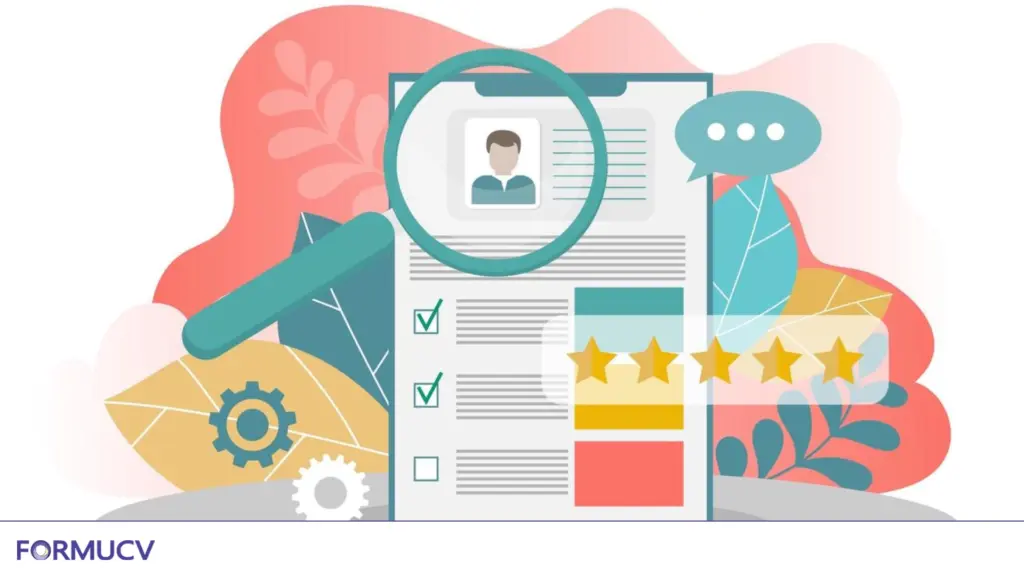
Final Checklist: Choosing the Right Format of Resume for Job
Here’s a quick reference to make your decision easier. Before you send that next job application, run through this list:
- Do I know my career story (steady, changing, or skill-driven)?
- Did I choose a format highlighting my strengths (chronological, functional, or hybrid)?
- Is my layout ATS-friendly (simple headings, no graphics, standard fonts)?
- Have I written the resume for the specific role and region?
- Is my resume free of typos, clutter, and irrelevant details?
Does it look professional, clean, and easy to read?
If you can tick all six, you’re interview-ready.
FAQs on the Best Format of Resume for Job
Should my resume be one page or two?
For most applicants, one page is best. Two pages are acceptable if you’re senior-level with 10+ years of experience. Anything longer risks losing employer attention.
Do I need a photo of my resume from the UAE?
It depends. Multinationals usually prefer no photo to avoid bias, but some local companies still expect it. When in doubt, check the job posting or ask HR directly.
Which format of resume for job works best for fresh graduates?
The functional format, focusing on skills and academic projects, is often ideal. If you have strong internships, a chronological format can also work.
What’s the best format of resume for job interview readiness?
Chronological or hybrid, depending on your experience. Both make it easy for employers to track your career story quickly.
Can I use the same resume format for every job?
No. Keep one master version, but adapt format details and section emphasis to fit each role. Employers can tell when a resume has been customised.
Are infographics or highly designed resumes compelling?
Not for ATS. They may look friendly to humans, but they often fail automated screening. If you want to showcase creativity, use a simple ATS-safe resume and add a link to a personal portfolio site.
Conclusion: Your Resume Format Is Your First Impression
Your resume is more than just a record; it’s your personal marketing tool. The format of resume for job applications shapes how that story is received. Choose a structure that amplifies your strengths, avoids common pitfalls, and speaks the language of both ATS and employers.
Remember:
- Fresh graduates → functional.
- Mid-career professionals → hybrid.
- Senior professionals → chronological.
- Career changers → functional or hybrid.
If you’re applying in the MENA region, pay attention to local preferences; employers in Dubai, Riyadh, or Cairo may value different signals, but all expect clarity and professionalism.
That’s why tools like FormuCV, the best free resume builder without paying, exist: to take the guesswork out of formatting, guide you with employer-approved templates, and help you match your resume to the right job, whether it’s your first internship or a senior leadership role.
Your resume format can be the difference between silence and a callback. Choose wisely, write carefully, and let your skills shine through.
